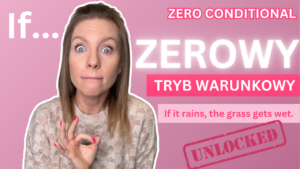Present Perfect vs Present Perfect Continuous: wstęp
Present Perfect oraz Present Perfect Continuous to dwa czasy perfect, których używamy do mówienia o przeszłych wydarzeniach. Czas Present Perfect używany jest do mówienia o zdarzeniach z przeszłości, których skutki są wciąż widoczne w teraźniejszości. Czas Present Perfect Continuous również używany jest do mówienia o przeszłości, która ma wpływ na teraźniejszość. Różnica między tymi dwoma czasami polega na tym, że w Present Perfect Continuous podkreślamy czas trwania danej czynności. Jak jeszcze różnią się oba te czasy?
Present Perfect vs Present Perfect Continuous: różnice
Present Perfect |
Present Perfect Continuous |
|
|---|---|---|
Konstrukcja zdania twierdzącego |
||
osoba + have/has + III forma czasownikaI have worked. |
osoba + have/has + been + czasownik-ingI have been working. |
|
Konstrukcja przeczenia |
||
osoba + have/has + not + III forma czasownikaI have not worked. have not = haven’t |
osoba + have/has + not + been + czasownik-ingI have not been working. have not been = haven’t been |
|
Konstrukcja pytania |
||
Have/has + osoba + III forma czasownikaHave I worked? |
Have/has + osoba + been + czasownik-ingHave I been working? |
|
Użycie |
||
+ czynność wykonana (lub niewykonana) w przeszłości, której skutki są nadal odczuwalneI have broken many plates since I began to wash the dishes.
She has slept for two hours and now she feels refreshed. |
+ zakończona czynność rozpoczęta w przeszłości, której skutki są nadal odczuwalneI have been breaking plates since I started washing the dishes.
She has been sleeping for two hours so she’s feeling refreshed now. |
|
+ czynność, która dopiero została zakończonaWe have watched TV until just now.
I have just painted my room pink. |
+ czynność rozpoczęta w przeszłości, która nadal trwaWe have been watching TV since last night.
I have been painting my room pink. |
|
+ czynność, która trwa w niezakończonym jeszcze okresieI have played tennis a lot this summer.
He has read many books this weekend. |
||
+ czynność powtarzająca się regularnie w nieokreślonych odstępach czasu od przeszłości do terazWe have eaten sushi several times.
They have met a couple of times since 2018. |
||
+ czynność z przeszłości o niesprecyzowanym czasieThey have lost their way.
There has been an accident. |
||
+ doświadczeniaI have been to Paris.
Adam has worked in a movie theater. |
||
Charakterystyczne słowa |
||
| + already + just + yet + never + ever + for + since They have been in London since March.
She has already finished her work.
I have never worked before.
Adam hasn’t seen this movie yet. |
+ recently + lately + for + since Avah has been exercising a lot recently.
I haven’t been sleeping well lately.
We have been waiting in line for three hours.
He has been eating healthy since he had a heart attack. |
|
Tworzenie czasowników |
||
III forma czasownikaW czasie Present Perfect stosuje się czasowniki w III formie nazywanej Past Participle. Poznaj zasady tworzenia tej formy czytając artykuł Past Participle w języku angielskim. |
Czasownik-ingW czasie Present Perfect Continuous używa się czasowników z końcówką -ing, czyli w formie Present Participle. Poznaj zasady dodawania tej końcówki do czasowników z artykułu Present Participle. |
|





